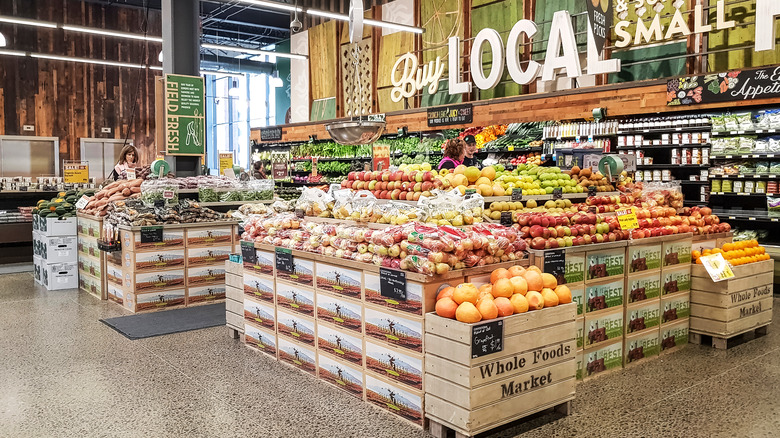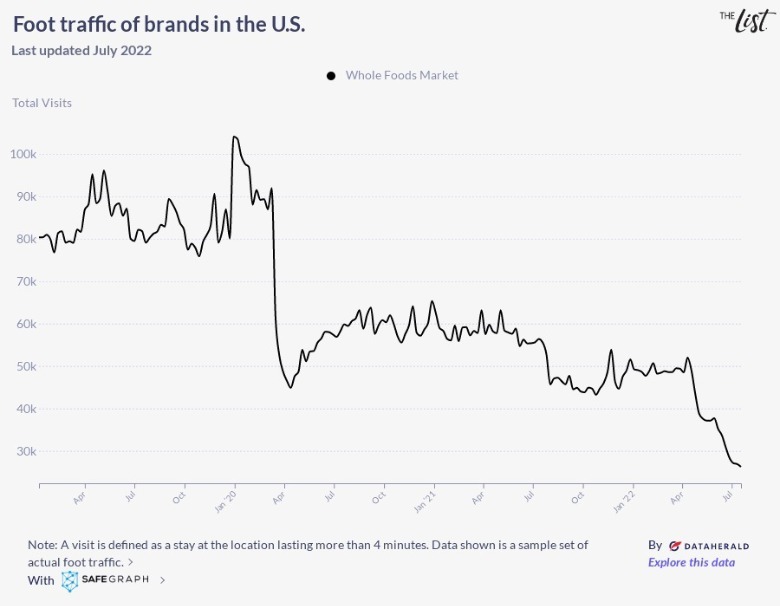This May Be The Reason Whole Foods Foot Traffic Is Tanking
When it comes to buying groceries, you get what you pay for. Making the swap to organic foods is a great way to fuel your body, but it often comes with a hefty price tag. You may need to make a little more room in your grocery budget if you shop at places like Whole Foods, a supermarket chain that provides all-natural, organic groceries.
According to their website, Whole Foods began as one grocery store in Austin, Texas, dedicated to bringing fresh foods into a "supermarket format." Today, Whole Foods has over 500 locations worldwide. Investopedia reports that prior to being acquired by Amazon in 2017, shopping at Whole Foods cost approximately 10 to 20% more than other grocery stores. Once Amazon stepped in, prices became slightly more reasonable but still higher than rival grocery stores. Still, the premium prices did not seem to bother people who value fresh, high quality products that are ethically sourced and free of chemicals and preservatives (Via The Grocery Store Guy).
There are plenty of reasons you should start shopping at Whole Foods, but according to foot traffic, people have been spending significantly less time at the high-priced grocer this past summer. The List created a graph via Data Herald that tracked foot traffic trends over a period of two years, and the results show bad news for Whole Foods.
Monthly visitor averages at Whole Foods are declining at a rapid rate
According to The List's graph, Whole Foods saw an average of 85,000 visitors each month, with a spike in visitors each January, presumably as people stock up on fresh veggies and healthy foods to kick off their New Year's resolutions. But when the pandemic hit in March 2020, foot traffic dropped below 50,000, as Whole Foods continued to see significantly less visitor averages each month while people navigated their safety and comfort levels.In May 2022, the grocery store took another hit as foot traffic plummeted below pandemic era averages, steadily declining throughout the summer. COVID-19 is most likely not the cause of Whole Foods' recent struggles; rising prices may be to blame.
Grocery shopping could change forever due to inflation — prices of groceries and essentials continue to climb as hard decisions are made about what stays on people's grocery lists. "A price increase is like a loss, and we feel pain when we experience that loss," professor of behavioral marketing Deborah Small told Vox, reflecting on how inflation has caused many to rethink how and where they spend their money.
According to Insider, a Numerator survey reported that 31% of shoppers are "switching to less expensive brands" as they navigate the rising prices. Shoppers are frequenting discount stores and wholesale clubs, prioritizing price over quality for their grocery essentials.

